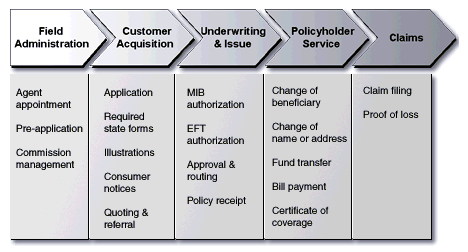E-Signatures in U.S. Insurance: Overview, Issues, & Case Studies
Abstract
Insurers aren't lining up to take advantage of e-signature opportunities, despite a green light from most state regulators and the maturation of e-signature technologies.
The stage has been set for insurance carriers to dramatically reduce cycle times and lower process costs using e-signatures. But carriers have been slow to act. Celent Communications' new report, E-Signatures in U.S. Insurance: Overview, Issues, & Case Studies, predicts that the percentage of carriers making substantial use of e-signatures will reach only low double digits in the next 18 months.
Figure: Opportunities for E-Signatures in Insurance

"E-signatures can be used effectively in the insurance industry, which struggles with long cycle times and high process costs," says Celent analyst Craig Weber, author of the report. "Particularly in relatively low-risk processes like taking applications for health and auto insurance, more carriers should be using e-signatures to help meet customer expectations of convenience and speed."
The report presents a strategic framework to help companies assess potential e-signature applications. It features case studies illustrating successful e-signature applications at American General, Zurich Life, National Health Insurance, and eHealthinsurance.
"Carriers are hesitant to go down the e-signature path because they perceive it to be risky," Weber says. "But the reality is that carriers using e-signatures today have found ways to mitigate the risk. And their efforts are reaping tangible rewards."

